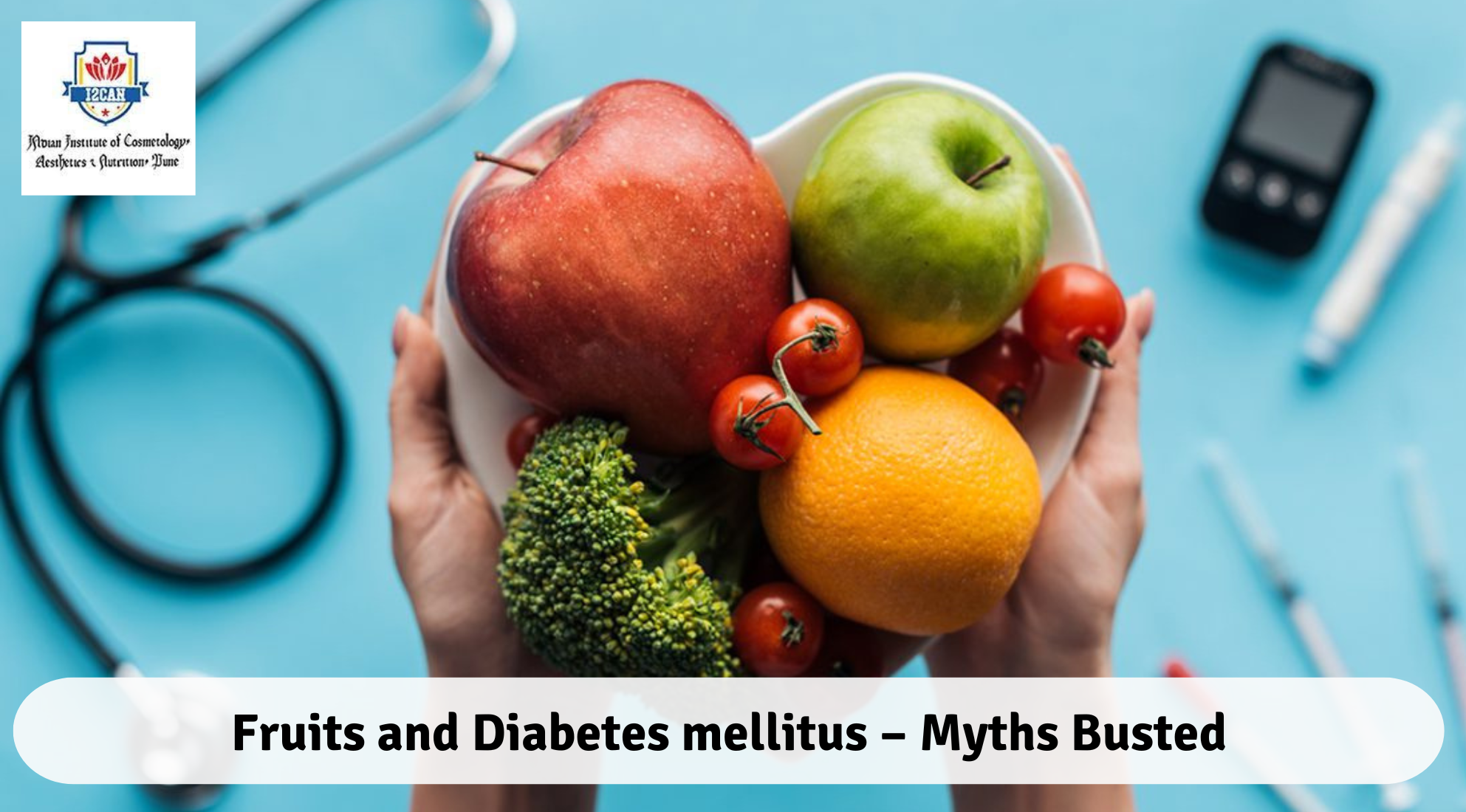Myth: People with diabetes should avoid all fruits.
Busted: While it’s true that fruits contain natural sugars, they also provide essential vitamins, minerals, fiber, and antioxidants. Moderation is key, and many fruits can be part of a healthy diabetes-friendly diet.
Myth: Eating too much fruit will cause blood sugar spikes.
Busted: Whole fruits, especially those with high fiber content, have a minimal impact on blood sugar levels. Fiber slows down the absorption of sugars, helping to regulate blood glucose levels. It’s important to consider portion sizes and include a variety of fruits.
Myth: Only low-sugar or low-carb fruits are safe for diabetes.
Busted: While some fruits have a lower glycemic index and are considered better choices for people with diabetes, it’s not necessary to limit yourself to only these fruits. Portion control and considering the overall carbohydrate content of your meals are more important.
Myth: Fruit juices are a healthy choice for people with diabetes.
Busted: Fruit juices can be high in sugar and lack the fiber found in whole fruits. It’s better to consume whole fruits, as they provide more nutritional benefits and have a lower impact on blood sugar levels.
For individuals with diabetes, it’s important to focus on managing carbohydrate intake, considering the glycemic index (GI), and including a variety of nutrient-dense foods in their diet. Here are some fruits that are generally considered diabetes-friendly, along with suggested portion sizes:
Berries (e.g., strawberries, blueberries, raspberries):
These fruits are rich in antioxidants and have a lower glycemic index.
Portion size: About 1/2 to 1 cup (fresh or frozen) per serving.
Cherries:
Cherries have a moderate glycemic index and are a good source of fiber and antioxidants.
Portion size: About 1/2 to 1 cup (fresh or frozen) per serving.
Apples:
Apples are high in fiber and have a lower glycemic index.
Portion size: One small apple or about 1/2 cup of sliced apples per serving.
Pears:
Pears are a good source of fiber and have a moderate glycemic index.
Portion size: One medium pear or about 1/2 cup of sliced pears per serving.
Peaches and Nectarines:
These fruits can be enjoyed in moderation.
Portion size: One medium peach or nectarine per serving.
Plums:
Plums are relatively low in carbohydrates and have a moderate glycemic index.
Portion size: 2 small or 1 medium-sized plum per serving.
Grapes:
While grapes contain natural sugars, they can be included in moderation.
Portion size: About 1/2 to 1 cup of grapes per serving.
It’s important to note that portion sizes can vary based on individual needs and should be adjusted according to factors such as personal tolerance, blood sugar levels, and overall dietary composition. Additionally, incorporating a mix of fruits into the diet, rather than focusing on a single type, can provide a broader range of nutrients.
Allowed fruits in Diabetes Mellitus
Individuals with diabetes shouldn’t avoid all fruits , following information will give best way to consume fruits with right portion size
Berries (e.g., strawberries, blueberries, raspberries):
These fruits are rich in antioxidants and have a lower glycemic index.
Portion size: About 1/2 to 1 cup (fresh or frozen) per serving.
Cherries:
Cherries have a moderate glycemic index and are a good source of fiber and antioxidants.
Portion size: About 1/2 to 1 cup (fresh or frozen) per serving.
Apples:
Apples are high in fiber and have a lower glycemic index.
Portion size: One small apple or about 1/2 cup of sliced apples per serving.
Pears:
Pears are a good source of fiber and have a moderate glycemic index.
Portion size: One medium pear or about 1/2 cup of sliced pears per serving.
Peaches and Nectarines:
These fruits can be enjoyed in moderation.
Portion size: One medium peach or nectarine per serving.
Plums:
Plums are relatively low in carbohydrates and have a moderate glycemic index.
Portion size: 2 small or 1 medium-sized plum per serving.


